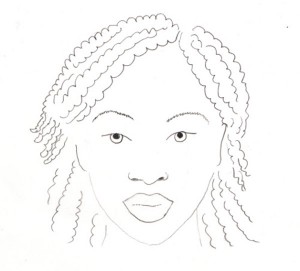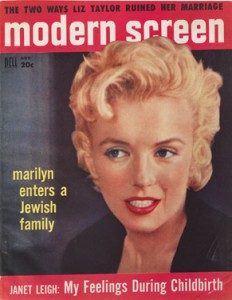Names have meanings. They project the hopes, dreams, and aspirations of fathers and mothers, they follow trends, and foretell the future of their bearers. For Jews many decisions are connected to the naming of a child: should the name reveal his or her religious affiliation, only be recognizable to other Jews, or neither? Will it be a name native to the family’s country of origin or to the child’s country of birth? Has the name been translated? Does it memorialize someone? Colleagues and friends of the Jewish Museum Berlin share their thoughts with this blog, on this and other questions.
Naomi
 My name means “pleasant” in Hebrew, and pleasantly inconspicuous it was in North America of the mid-1970s, where I was born. Naomi ranked neither among the fashionable names like Jennifer, Amy, Melissa and Heather, nor was it as unusual as the names given to the other flower-children of my generation, such as Blossom, Charisma, Summer, or Echo.
My name means “pleasant” in Hebrew, and pleasantly inconspicuous it was in North America of the mid-1970s, where I was born. Naomi ranked neither among the fashionable names like Jennifer, Amy, Melissa and Heather, nor was it as unusual as the names given to the other flower-children of my generation, such as Blossom, Charisma, Summer, or Echo.
Referring to the Biblical story of Ruth and Naomi, the name is popular among Jews. → continue reading

Youth hostel in alpine serenity
What’s the newest of the new in Jewish youth culture? To find out, I visited a machane, a Jewish summer camp, which congregated Europeans under the age of eighteen in a remote village in the Alps. Hoping to scout future Jewish ideas, themes, and memes, I had my eyes and ears open for interesting fashions, cool music, new media, games, slang, and food.
My quest was triggered by a slew of innovations brought about by the current generation. Deviators have exchanged their traditional tallitot (prayer shawls) for colorful ones with lilies and rainbows. Others have produced trip hop versions of Jewish songs, “Matzah raps,” and uploaded parodies of Biblical stories onto youtube. → continue reading
Why a particular subject captures the interest of the public at a given time is not always immediately apparent. Conversion, for instance, has become the topic of conferences, lectures and exhibits in German-speaking Europe without any notable change in its social significance nor religious practice.

Picture in the current special exhibition “The Whole Truth” accompanying the question: Jew or non-Jew? Marilyn Monroe on the cover of the Modern Screen Magazine, November 1956
© Jewish Museum Berlin, photo: Jens Ziehe
The number of converts to Judaism is invariably small. According to the data collected by the Zentralwohlfahrtsstelle der Juden in Deutschland, on average 64 conversions are carried out yearly in the various German-Jewish communities, and since the year 2000, the number has remained fairly stable. Nor has the size of the Jewish communities varied much. For over a decade, the number of members has stabilized at around 105.000. In relation to the size of the community, the total number of converts since 1990, 1.366, makes up under one percent of the Jewish community. The number of Jews leaving the communities is slightly higher, around one hundred a year, yet the number is not particularly meaningful, because it includes people who leave for all sorts of reasons, including financial. By all accounts, today’s Jewish converts are a minute and exotic minority.
Yet the topic is currently being discussed with much enthusiasm. → continue reading
 My name means “pleasant” in Hebrew, and pleasantly inconspicuous it was in North America of the mid-1970s, where I was born. Naomi ranked neither among the fashionable names like Jennifer, Amy, Melissa and Heather, nor was it as unusual as the names given to the other flower-children of my generation, such as Blossom, Charisma, Summer, or Echo.
My name means “pleasant” in Hebrew, and pleasantly inconspicuous it was in North America of the mid-1970s, where I was born. Naomi ranked neither among the fashionable names like Jennifer, Amy, Melissa and Heather, nor was it as unusual as the names given to the other flower-children of my generation, such as Blossom, Charisma, Summer, or Echo.
